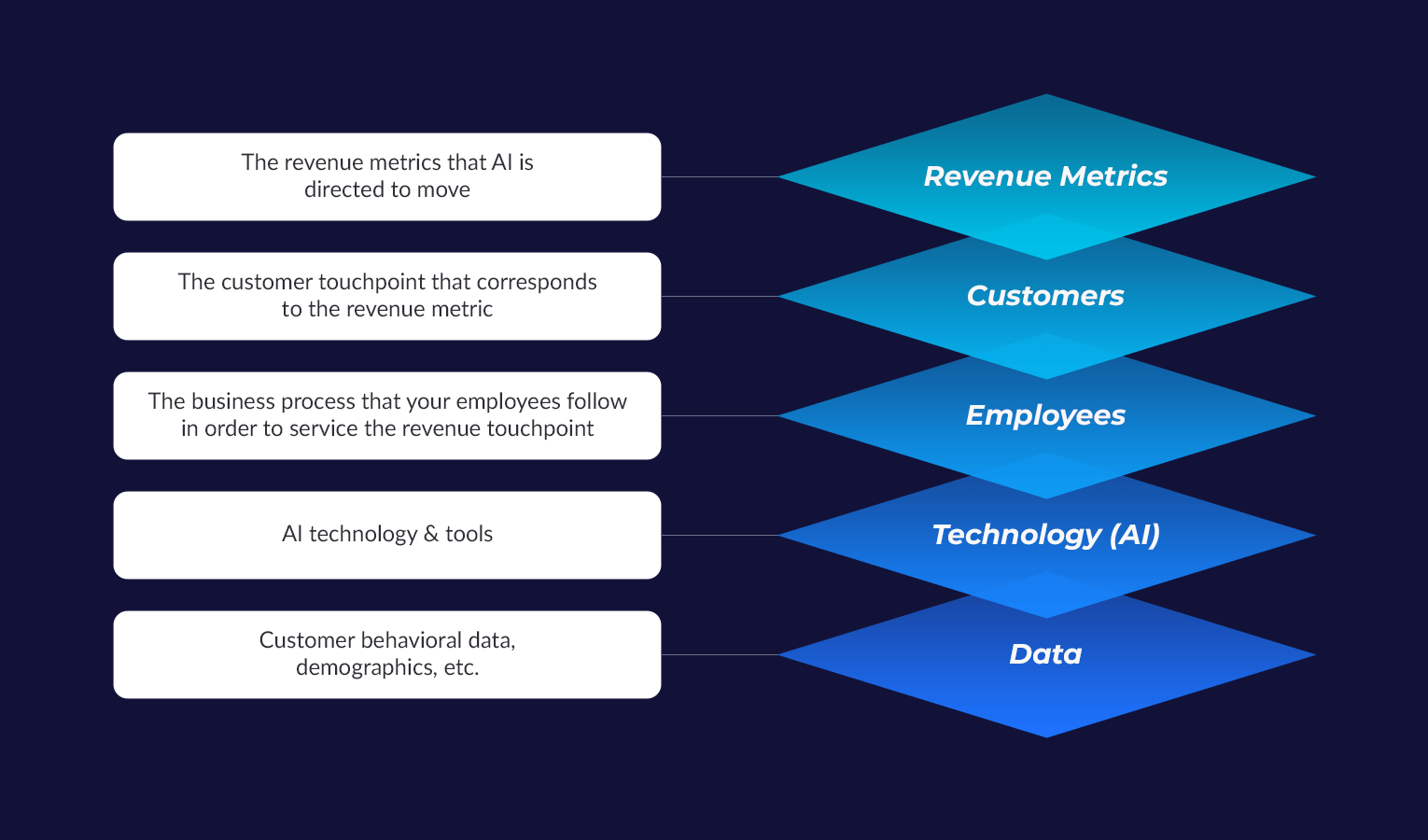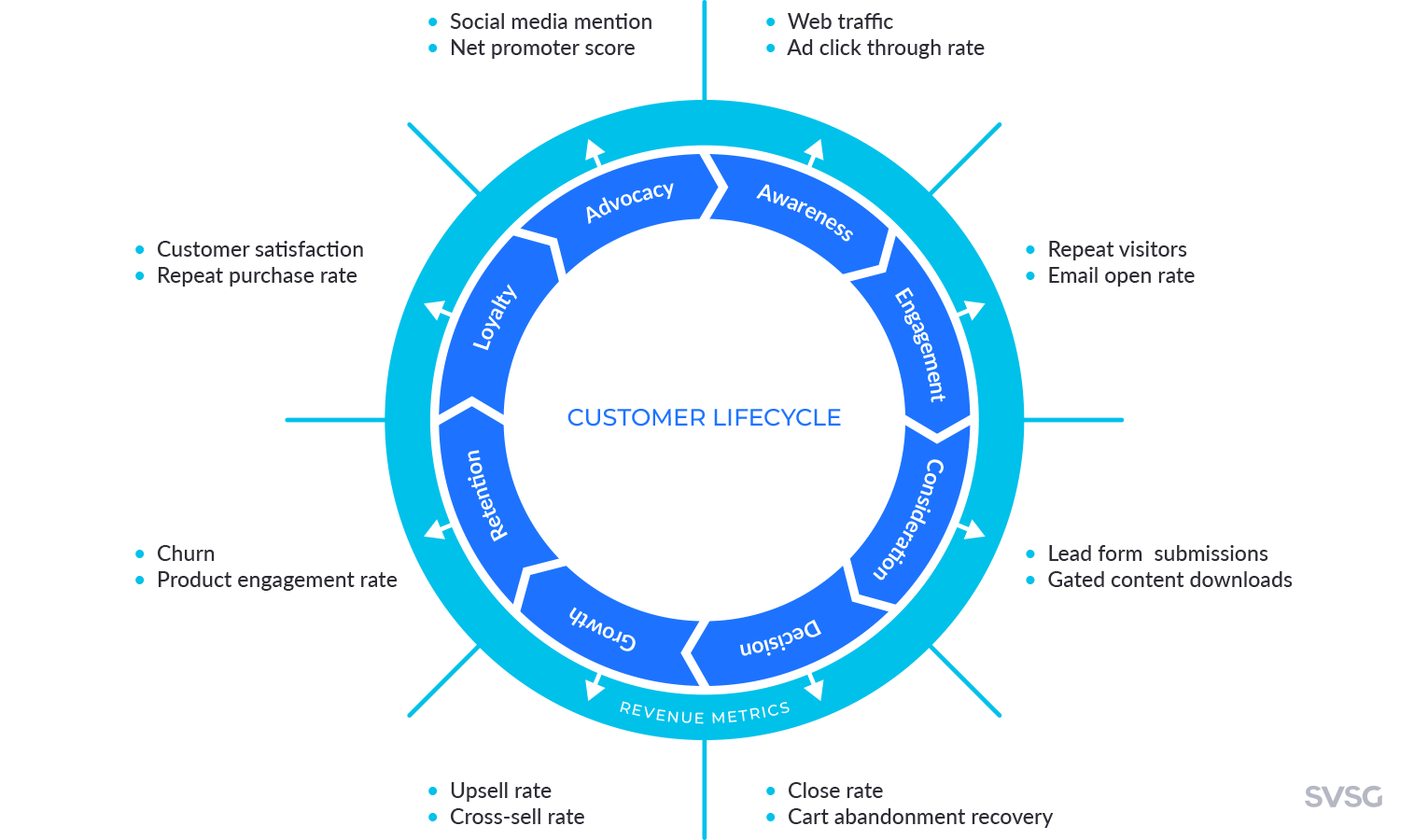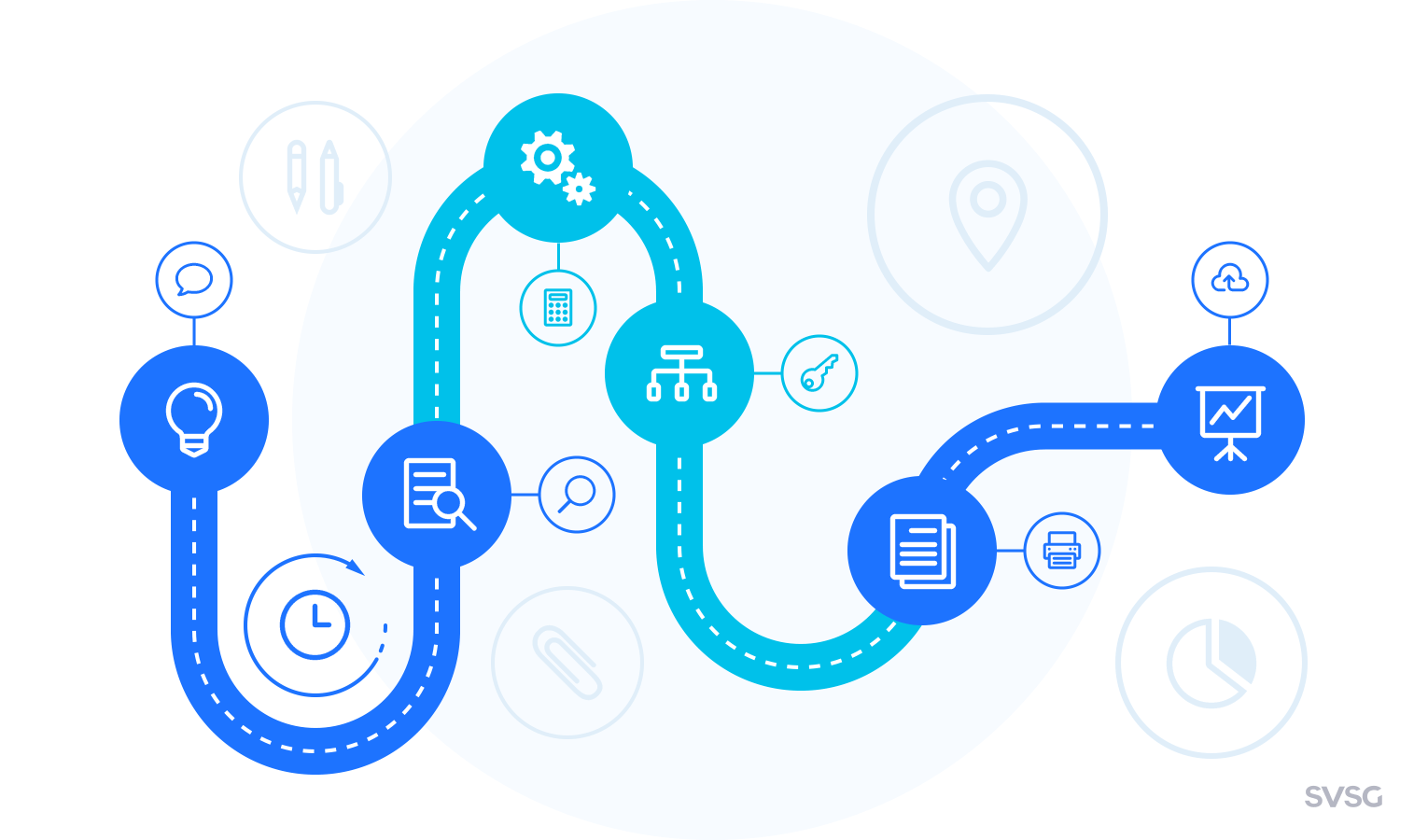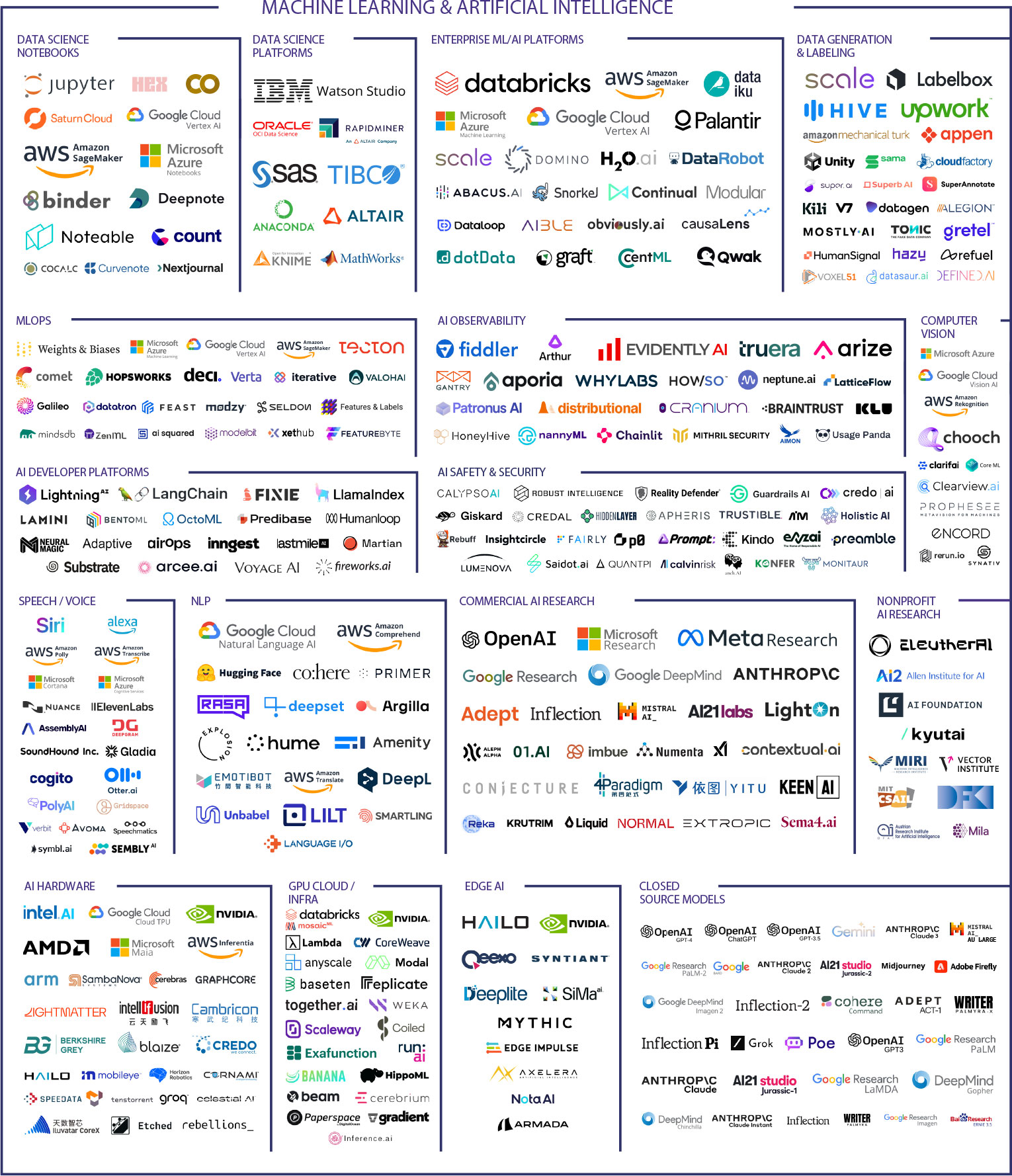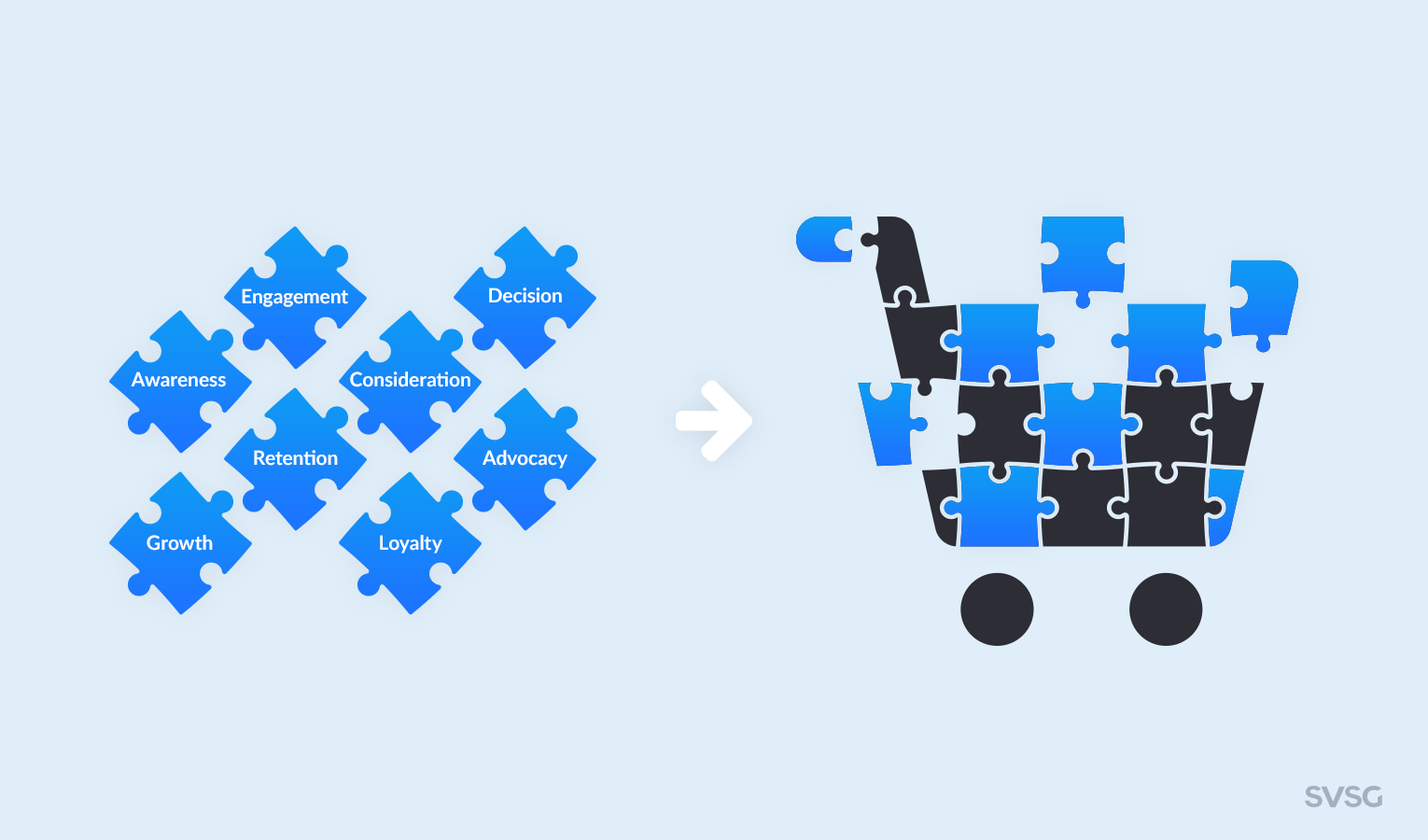A CxO’s Guide to Increasing Revenue with AI
AI and Revenue – The winning formula
Ask any CEO whether they think AI is important to the success of their business and 9 out of 10 will respond in the affirmative. Follow up with a question about their AI strategy and its akin to a Senator describing the internet.
Generative AI is paradoxical in that way. On one hand, it’s the most accessible digital technology humanity has created in that we can converse with it in natural language. On the other hand, the nuances that make it useful to a particular business can require the domain expertise of a PhD.
In this post we’ll attempt to meet in the middle. We’ll present 5 layers that connect data to revenue through AI, and along the way expose why making money with AI is not as simple as prompting ChatGPT, but thankfully less challenging than a digital transformation.
5 Layer Framework: Our approach to connecting AI with revenue for the enterprise
Layer 1: Revenue Metrics
The first layer addresses revenue metrics. Metrics are a core ingredient to capitalism. We have all agreed that money represents value, and so we set out our days measuring how much of it we have accumulated (the primordial metric). The more sophisticated business leaders measure much more, starting from their valuation all the way down to email open rates. But even the best of managers struggle to measure a clear enough view of their business in order to efficiently rally their employees, much less AI, toward the most effective pathway of generating more revenue.
AI can be used to help solve any metric, but it also introduces new metrics that were impractical to measure previously. To illustrate, we recently worked with a mid-sized enterprise that wanted to convert more of their email newsletter subscribers into paid customers for their SaaS offering. The marketing team came up with all number of creative campaign ideas, but when it came time to estimate the ROI (i.e. how much revenue would be generated) it was all broad stroke approximations; small changes to conversion assumptions resulted in massive variances in ROI when projected over the millions of leads in their email list. The CEO was flummoxed.
We helped the company approach the problem with an “AI” mindset. With millions of leads (email subscribers) each having hundreds of behavioral attributes (i.e. email open rates, website visits, etc) it was impossible to use automated rules or manual reviews to distinguish leads who still needed nurturing from prospects who had crossed over into the “Consideration” stage of the customer lifecycle. We showed how their data, that was sitting dormant in Salesforce, could be used to train an AI model that could accurately measure and identify “marketing qualified leads” (MQLs). There were much fewer MQLs than leads, which gave the marketing team a more focused way of developing and prioritize campaigns based on the likelihood of converting likely buyers vs leads.
Want to find your biggest
revenue opportunity with AI?
Layer 2: Customer Experience
The second layer addresses the customer lifecycle. Any revenue metric in a business can be traced to a customer touchpoint, which is the financial reason why customer experience matters. First-order examples, like clicking “purchase” on a website are celebrated, but second and third-order examples — like clicking on an ad, choosing NOT to opt-out of a subscription, or saying nice things about you to a friend — are equally critical to generating revenue. In fact, there are 8 stages of touchpoints that determine a customer’s lifetime value, and a business’ lifetime existence is tied to how well they service the customer at these touchpoints in comparison to the competition.
Change is afoot at this layer due to AI. Customers are expecting more personalized content across their web sessions, product purchases, and when they call into the contact center. There are three important considerations we emphasize when we work with companies to improve this layer with AI:
Digitize – Many companies still operate offline, which limits visibility. If your sales team is calling your customers, but you aren’t using a telephony system to record the calls, then AI will be of little use.
Capture – Customer touchpoints are where the most valuable data for a business can be collected, and as such, its critical to capture the right data. We see companies discarding data (i.e. neglecting to store form submissions), corrupting their data (i.e. overriding data without versioning) and missing key signals (i.e. text input is typically much richer than checkboxes).
Simplify – People would rather speak in natural language than click around your website to discover their answers, and we expect to see companies embrace more language-first interfaces.
As an example, we recently helped an enterprise purchase an AI company that provided the capability of servicing customer inquiries 24/7 via a chatbot. The enterprise had relied on livechat agents during 9am-5pm and gave consumers the option of submitting a lead form outside of their business hours. The company estimated as many as 1/3 of leads were being missed for lack of staff availability. By introducing the newly purchased digital chatbot, the enterprise was able to increase the number of leads, capture more data (the chatbot provided for more turns of the conversation than the lead form), and ultimately provide a simpler interface for customers as they did not have to wait overnight for a response. The enterprise is now expanding into generative voice.
Explore our
AI Revenue Workshops
Layer 3: Employee Business Process
The next layer down in is the internal business operations that service the customer’s revenue touchpoints. When a customer clicks “learn more” on a website, the “express delivery” option for shipping, or emails the support team with an order inquiry it kicks off a series of processes that are either handled directly by an employee or indirectly by an automated systems that the workforce has set up.
The key challenge for any company is to ensure that the right things happen for the customer every time. This “business process” is typically stored in documents, kept in employee heads, or hard coded in a software tool, all of which introduce the following challenges:
Out-of-date rules – The business environment is constantly changing, and any mismatch between business processes and reality will invariably leads to upset customers.
Employees overhead – Each new business process requires the workforce to learn and maintain a new rule, leading to a training nightmare with knowledge gaps across the workforce.
Error prone manual processes – While machines thrive with rules, most people find them tedious. An employee having a bad day or a burnt out workforce can break the business machine.
To overcome these challenges, companies can use AI to selectively automate business processes one at a time. For example, we recently helped a company that had built a highly sophisticated, but brittle, custom CRM software solution that orchestrated every step of their marketing and sales process. Changing any part of the software was risky as it would propagate through the revenue cycle. We identified an insertion point where we could override a rules-based lead assignment business process with an AI model that we trained using hundreds of customer attributes. The result was a doubling of sales qualified leads, but just as important, because the business process was operating in the background it required no new training for employees. Further, the AI was constantly retrained with new data, eliminating the need for manual upkeep of rules.
Layer 4: AI Technology
The fourth layer, the technology layer, is where the AI “brains”, and an alphabet soup of tech acronyms, are taking shape. Fine tuned LLMs (large language models), RAG orchestration (retrieval-augmented generation), and RLHF (reinforcement learning from human feedback) are all part of an emerging AI technology stack that is powering the improved business processes covered above that ultimately deliver revenue generating customer experiences.
The AI technology landscape is evolving rapidly, introducing the following challenges:
Vendor selection – Executives we speak with are worried about investing in AI tools that become obsolete the next quarter. As a reference point, a recent AI landscape tracks over 2000 vendors, up from 30% YoY.
Shortage in skillsets – AI sounds complicated, and many companies don’t feel they have the staff to maintain, much less develop, an AI solution.
Costs – Technology can sometimes be a money pit, AI sounds like the deepest of them all.
We see a lot of companies getting stuck in analysis paralysis at this stage, but like learning any new skill it is more important to get started than to do things perfectly. This is why we emphasize composable or “swappable” architectures to allow for a crawl/walk/run AI technology maturation process.
For example, we recently helped a company design a solution that used an off-the-shelf AI vendor for a pilot program in order to test a marketing automation capability. This allowed the company to prove the revenue case quickly (in under 3 months), and as we’ll cover next, because the data was being collected in a data warehouse the company was in a position to swap out the vendor with a more advanced large language model after they accumulated enough training data.
As the AI vendor landscape continues to change, it will be increasingly important for businesses to adopt composable architectures.
Layer 5: Data
The final layer is the data that powers AI. Every business has valuable data, but only to the extent that it is organized and formatted in such a way that AI can utilize it. Here are common challenges we see companies face in this layer:
Dispersion – The data is spread across multiple SaaS vendors.
Incomplete – Not all data is being captured at the customer touchpoint.
Ambiguity – The data that is being captured gives an inconsistent signal of the customer intention.
The single most important thing a company can do at this layer is invest in a data warehouse. This is commonplace for tech companies and large enterprise, but for the 200,000 middle market enterprises with revenues between 10M-1B we find as few as 1 in 10 have a warehouse.
To illustrate the problem, think of your revenue generating customer touchpoints like pieces in a jigsaw puzzle. Every time your customer clicks on your ad, purchases from your website, or calls into your support department, they are leaving a digital puzzle piece as to what they need from you in order to keep purchasing. If the puzzle pieces are spread out across your website analytics, CRM and internal databases, then your AI will be looking at an incomplete view of your customer. A centralized data repository of the customer’s actions is key to developing AI that can orchestrate the workforce toward revenue.
See how we
monetize data with AI
Conclusion – Increasing revenue with AI
For the past two decades, enterprises have been slowly but surely moving into the cloud. In so doing, they have accumulated massive amounts of data that often sits dormant. AI offers the opportunity to monetize this data if it connects into the 5 layers outlined in this post.
As we enter this next era of Generative AI, we can expect to see AI get better at talking with us. We can also expect to hear CEOs sharpen their talking points around how they plan to increase shareholder value with AI. The inevitable winners will be able to illustrate how they are increasing customer lifetime value, a topic we’ll cover next.

